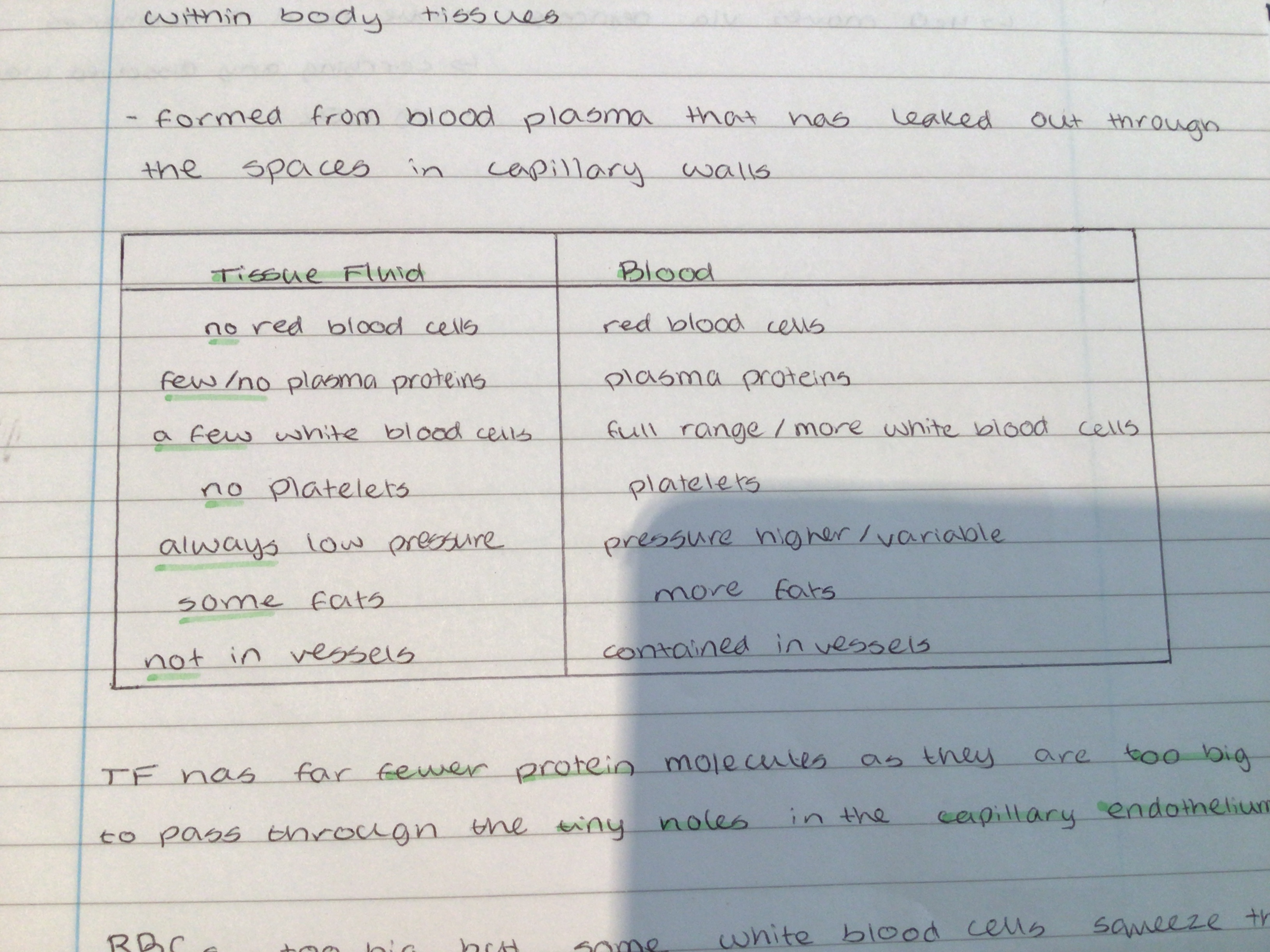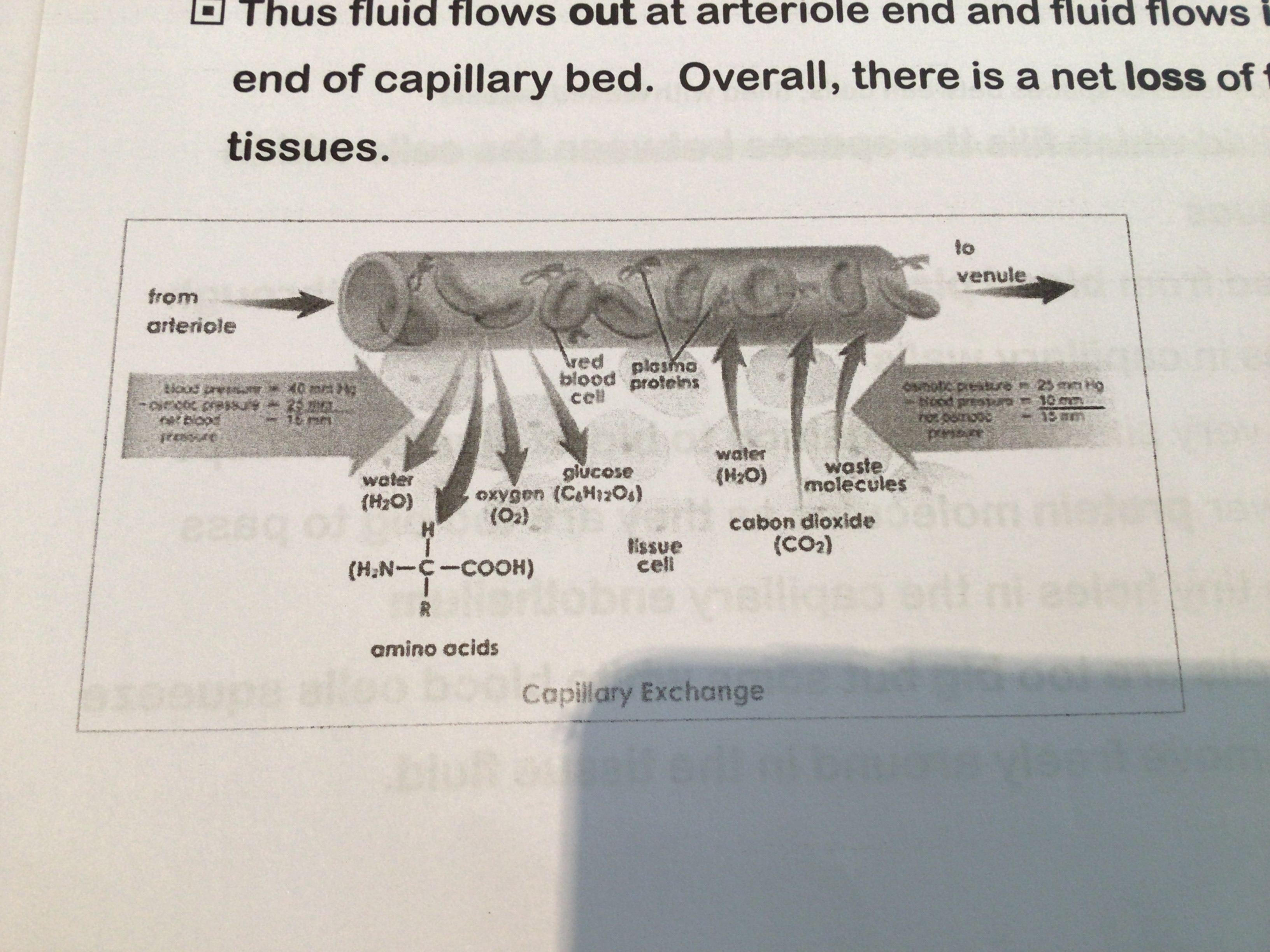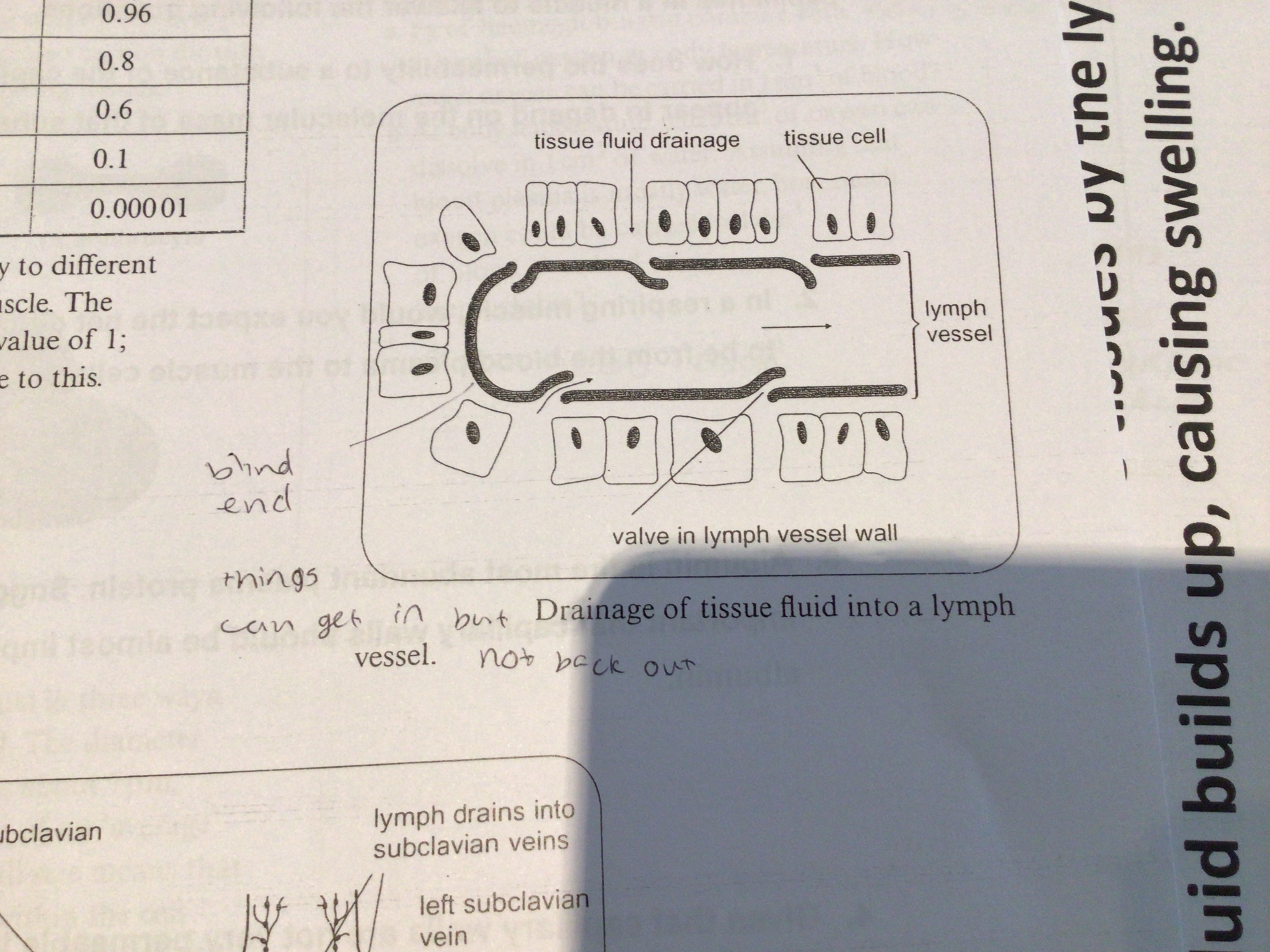Biology 🧬 Unit 8 - blood plasma, tissue fluid and lymph
0.0(0)
Card Sorting
1/19
Study Analytics
Name | Mastery | Learn | Test | Matching | Spaced |
|---|
No study sessions yet.
20 Terms
1
New cards
What is blood plasma; what does it contain
pale yellow liquid
Mostly water with a variety of substances dissolved in it eg. Nutrients such as glucose, and waste products such as urea; amino acids; CO2; oxygen
Plus protein molecules (plasma proteins) which remain in the blood all the time
Mostly water with a variety of substances dissolved in it eg. Nutrients such as glucose, and waste products such as urea; amino acids; CO2; oxygen
Plus protein molecules (plasma proteins) which remain in the blood all the time
2
New cards
What is tissue fluid
The fluid which fills the spaces between the cells within body tissues
3
New cards
What is tissue fluid formed from
blood plasma which has leaked out through the spaces in capillary walls
(Contains dissolved nutrients eg glucose and oxygen)
(Contains dissolved nutrients eg glucose and oxygen)
4
New cards
What are the differences between blood plasma and tissue fluid
Tissue fluid has:
No red blood cells
Few/no plasma proteins
A few white blood cells (less than blood plasma)
No platelets
Always low pressure
Some fates
Not in vessels
No red blood cells
Few/no plasma proteins
A few white blood cells (less than blood plasma)
No platelets
Always low pressure
Some fates
Not in vessels

5
New cards
how does exchange occur between tissue fluid and cells
By diffusion and facilitated diffusion
6
New cards
How does tissue fluid form
Due to hydrostatic pressure → where the pressure of the blood inside a capillary is sufficient to push fluid out into the space between the tissues; this is due to the contraction of the heart (left ventricle) it is therefore particularly high at the arteriole end of a capillary bed
As tissue fluid lacks the high concentration of plasma proteins, present in blood plasma, a water potential gradient is created and water moves by osmosis down the gradient from tissue fluid → capillaries (carrying any dissolved waste such as CO2)
Thus fluid flows out at arteriole end and fluid flows in at venous end of capillary bed; overall there is a net loss of fluid to tissues
As tissue fluid lacks the high concentration of plasma proteins, present in blood plasma, a water potential gradient is created and water moves by osmosis down the gradient from tissue fluid → capillaries (carrying any dissolved waste such as CO2)
Thus fluid flows out at arteriole end and fluid flows in at venous end of capillary bed; overall there is a net loss of fluid to tissues

7
New cards
Where in the capillary bed is hydrostatic pressure higher
Arteriole end
8
New cards
90% of fluid that leaks from capillaries seeps back into them; where does the remaining 10% go
Returns to the blood via the lymph vessels (lymphatics)

9
New cards
Tissue fluid can flow into lymphatics but not out, why?
due to tiny valves
10
New cards
Can large protein fit through the valves in the lymph vessels (lymphatics), and why is this important
Yes, the valves are big enough for large protein molecules to pass through; this is very important because they are too big to get into a capillary and if they are not removed from the tissue space between your cells you could die within 24 hours
11
New cards
What is oedema
Where tissue fluid builds up due to poor drainage through the lymphatics
12
New cards
What is it called when tissue fluid builds up due to poor drainage through the lymphatics
oedema
13
New cards
What is the fluid inside lymphatics called
Lymph → and is virtually identical to tissue fluid
14
New cards
Tissue fluid and Lymph in the liver have high concentrations of…..
protein
15
New cards
Where are high concentrations of lipid found
In the lymph in the walls of the small intestine, where lipids are absorbed from digested foods
16
New cards
Lymphatics join to form Larger lymph vessels which transport…..
lymph back up to the subclavian veins (large veins which run just beneath the collarbone)
17
New cards
lymph moves through the lymphatics in the same way as….
Blood in the veins - with valves to prevent back flow, and the contraction of surrounding muscles provides pressure
18
New cards
The flow through the lymph vessels is ……….. than blood flow
Slower
19
New cards
The flow is ver slow \~100 cm3 per hour through the thoracic duct ( the largest lymph vessel) in a resting human, compare blood flow at \~80 cm3 per ……
Second
20
New cards
What is diapedesis
The passage of blood cells through the intact walls of the capillaries, typically accompanying inflammation